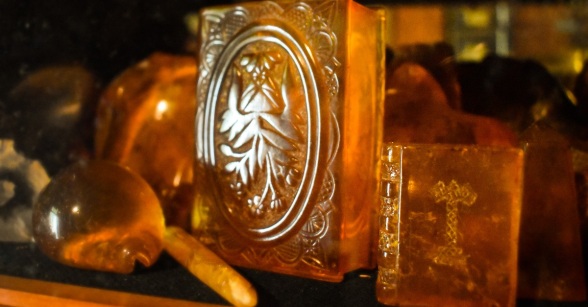A few weeks ago, I was contacted by the Kauri Museum in Matakohe. They offered me, among other things, a private tour of a historical building they’d been gifted. As long-time readers know, I’d never pass up an opportunity like that! A trip up north was duly organised.

The historical building in question is called Totara House. This is somewhat confusing, as its defining feature is that it’s made from kauri. The kauri and the totara are both native New Zealand trees, but kauri timber is especially prized. (I explained more about it in an article titled The Kauri Museum.)

Totara House was built in 1896, which is old for New Zealand, by a family that owned a kauri mill. (The site chosen for the house had totara trees on it, which excuses the name.) From the outside, it’s your typical grand colonial villa, with an impressive garden and even more impressive views. Inside, the rich kauri panelling puts you in mind of a stately home. The various pieces of kauri furniture are quite striking, perhaps none more so than the giant billiards table.
 What really captured my imagination, though, was a glass cabinet in the drawing room. It was filled with honey-hued ornaments of a rather intriguing kind of beauty, in all sorts of shapes, including miniature books with embossed covers. They were made of kauri gum, (tree sap,) heated, poured into moulds and polished until it appeared to glow.
What really captured my imagination, though, was a glass cabinet in the drawing room. It was filled with honey-hued ornaments of a rather intriguing kind of beauty, in all sorts of shapes, including miniature books with embossed covers. They were made of kauri gum, (tree sap,) heated, poured into moulds and polished until it appeared to glow.

In the Kauri Museum itself, there’s a whole underground room filled with kauri gum treasures – the largest collection in the world, in fact. For some reason, blocks of the stuff shaped to look like books was very popular. Maybe New Zealand’s early European settlers missed books; maybe books were easy shapes to make. Tell you what can’t have been easy to make, but was anyway: a kauri gum wig.

Seriously, that’s kauri gum.
 The lady who left Totara House to the museum was over a hundred when she passed away. She was born, grew up and died in it. She was the granddaughter of the first European woman to set foot in Matakohe. Her family owned the sawmill down the road. What changes she must have seen during her lifetime! (Must. Resist. Urge. To. Joke. Northland. Hasn’t. Changed.)
The lady who left Totara House to the museum was over a hundred when she passed away. She was born, grew up and died in it. She was the granddaughter of the first European woman to set foot in Matakohe. Her family owned the sawmill down the road. What changes she must have seen during her lifetime! (Must. Resist. Urge. To. Joke. Northland. Hasn’t. Changed.)
You have to make a special appointment to see inside the house. You can find out how on the Kauri Museum’s website.
